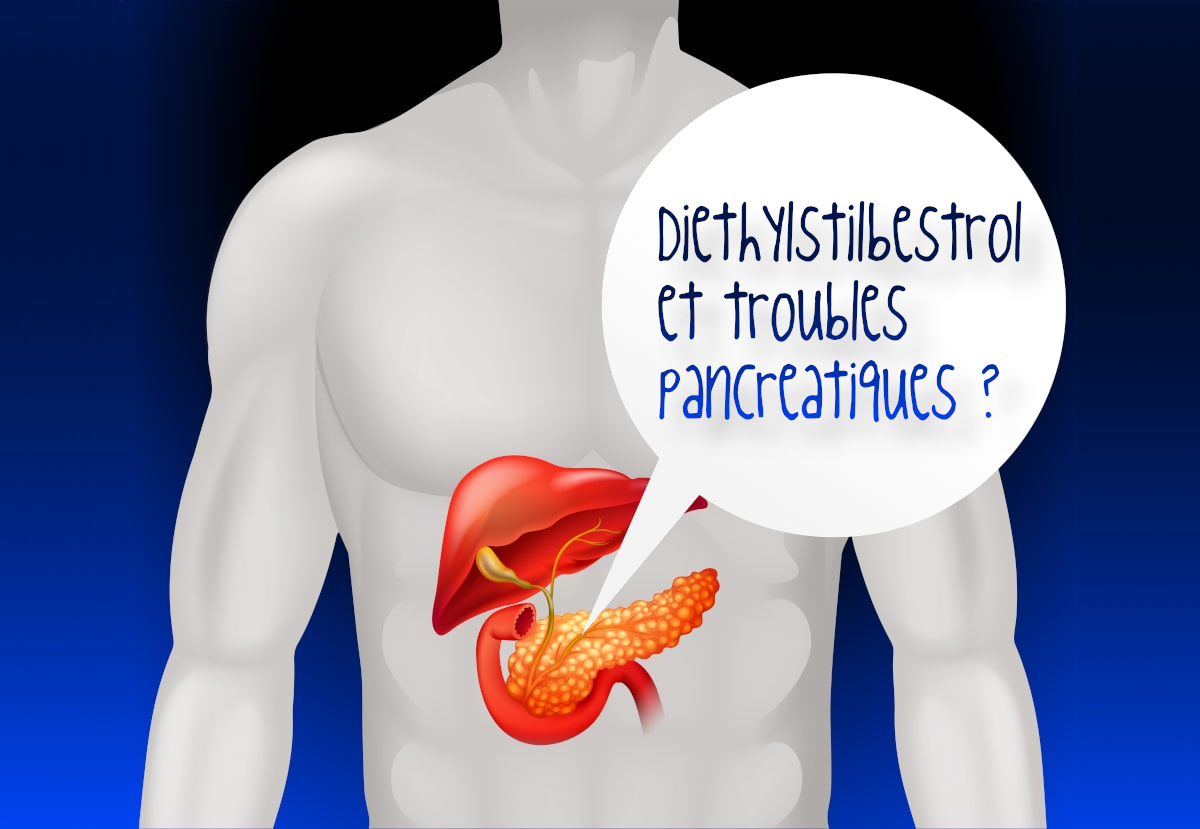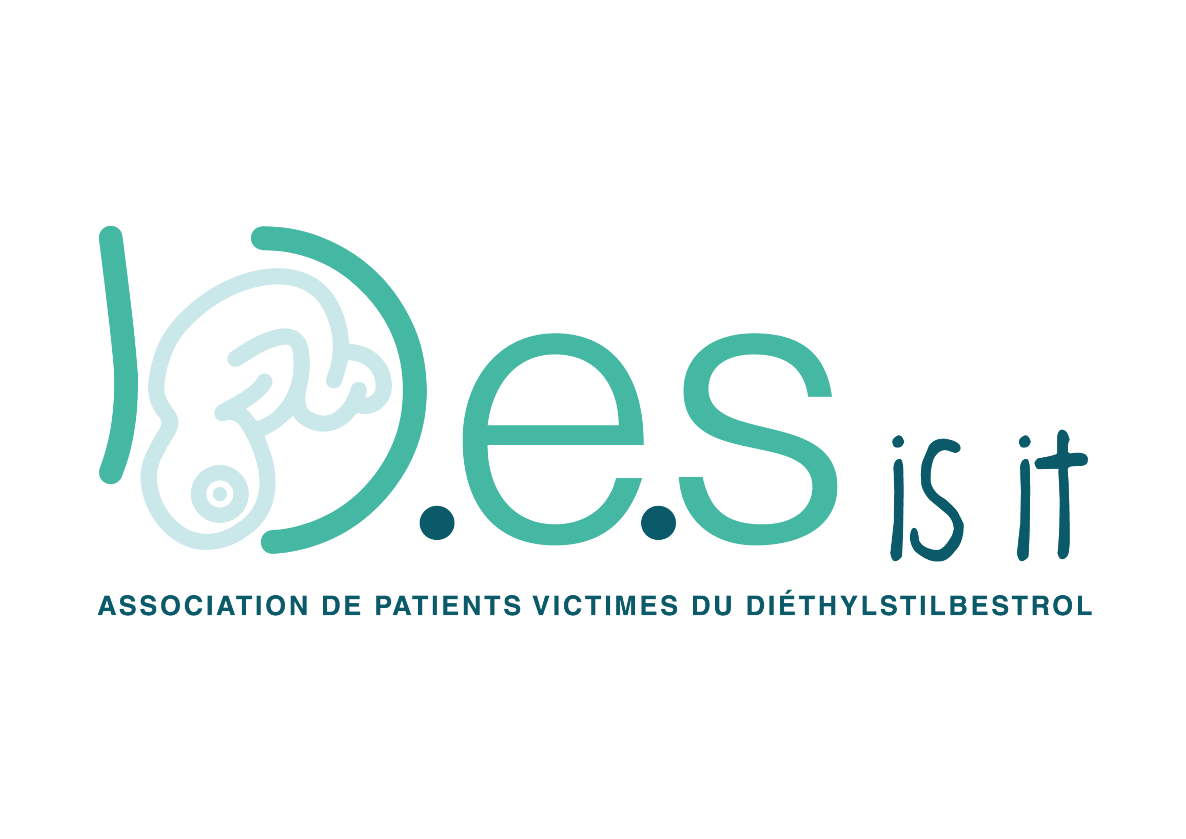
Effects of in utero diethylstilbestrol exposure on the pancreas
DES (diethylstilbestrol) is a synthetic estrogen and notorious endocrine disruptor synthesized in 1938 by a group of English scientists led by E.C. Dodds. It has been marketed in many countries by different pharmaceutical companies, mainly to prevent miscarriage and prematurity risks in pregnant women.
In France, DES was prescribed under the brand names Stilboestrol-Borne®, Distilbène® and Furostilboestrol® from 1948 to 1977. In 19711, A.L. Herbst published a study revealing an increased incidence of a very rare type of cancer in young girls exposed in utero to the drug: clear cell adenocarcinoma (CCA) of the vagina or cervix. Following this study, in the United States, the FDA issued an alert informing that diethylstilbestrol is now contraindicated during pregnancy.
France, alerted, could have reacted immediately, but the French Ministry of Health will only remove the indication "threat of abortion" from the Vidal dictionary in 1976, and the French drug agency will only publish a note in 1977 stipulating that the manufacturers' leaflets must henceforth indicate that diethylstilbestrol is contraindicated in pregnant women, thus causing thousands of additional victims...
DES is known to cause different types of cancers:
- clear cell adenocarcinoma of the vagina or cervix in DES daughters (exposed in utero), cases of CCA have also been reported in DES granddaughters (third generation);
- breast cancer in DES mothers (women who took the drug) and in DES daughters;
- possibly tumors and even testicular cancer in DES sons.
The study we are going to talk about today aims to evaluate the link between DES exposure and the risk of developing another type of cancer, that of the pancreas, as well as pancreatic disorders, type 2 diabetes and gallbladder disease, potentially involved in this malignancy.
Karen Chouinard Fernandes, administrator of the American group DES Info, spoke to us about this at our General Meeting in 2020, we also mentioned it in the report of the conference "Heritable impacts of diethylstilbestrol (DES)"2 but, following certain questions from victims, we are now going into more detail about this study.
The effects of diethylstilbestrol on pancreas
This study, Prenatal diethylstilbestrol exposure and risk of diabetes, gallbladder disease, and pancreatic disorders and malignancies3, published in the Journal of Developmental Origins of Health and Disease in 2020, was based on all the follow-up data from the various DES cohorts and subcohorts collected by the US National Cancer Institute (NCI), including unexposed men and women exposed in utero to diethylstilbestrol.
Data from 2019 from the same NCI cohort4 showed an increased risk of pancreatic cancer in DES-exposed women compared with the usual risk in the general population. This increase was considered concerning and warranted continued follow-up and further investigation.
Data from 2013 also suggested a modest increase in the risk of type 25 diabetes, a potential risk factor for pancreatic cancer.
In this more recent study3, the researchers were able to update their analyses of pancreatic cancer risk with an additional 5 years of data from women and, for the first time, from men exposed to diethylstilbestrol in utero. An additional 11 years of data also allowed them to update their analyses for diabetes. Given that these types of diseases tend to increase with age, it was all the more important to make these updates.
At the same time, and for the first time, the researchers analyzed associations with gallbladder disease and pancreatic disorders, both of which may be involved in the etiology of pancreatic cancer.
Since prenatal exposure to DES is known to be obesogenic and is associated with elevated circulating levels of insulin in mice6, we await the results of this study, detailed below.

Normal pancreas,
ChocChocsugarsugar, CC BY-SA 4.0, via Wikimedia Commons
What is the role of the pancreas?
The pancreas is located in the upper abdomen, between the small intestine and the spleen, just behind the stomach. It has two main functions, which is why it is called a "mixed gland":
- It is part of the digestive system by secreting pancreatic enzymes (gastric juices), playing an essential role in the digestion of fats, this is its so-called exocrine function.
- It also plays an essential role in the regulation of blood glucose levels (glycemia) by secreting hormones such as insulin, somatostatin and glucagon. This is its so-called endocrine function.
Diethylstilbestrol and type 2 diabetes
Diabetes is a chronic disease characterized by an excess of glucose in the blood. It is a disorder of the assimilation, use and storage of sugars brought by the food. This results in chronic hyperglycemia.
There are 2 forms of diabetes:
Type 1 diabetes often appears in childhood. It is due to an auto-immune destruction of the pancreas which no longer produces insulin. The cause is not well known and there is no way to prevent it. People with this condition are dependent on insulin, which must be administered by injection.
Type 2 diabetes, formerly known as non-insulin dependent diabetes (NIDDM), insulin resistant diabetes, middle-aged diabetes and acquired diabetes, accounts for 90% of diabetes cases and occurs later in life, often after age 40. It is mainly due to a state of insulin resistance and is associated with overweight and obesity. There are 2 abnormalities responsible for hyperglycemia:
- the pancreas makes insulin but not enough, compared to the blood sugar level: this is called insulinopenia;
- Insulin does not work properly, this is called insulin resistance.
Insulin can no longer regulate blood sugar levels, which means that glucose does not enter the body's cells to be used as fuel by the liver and muscles, but remains in the bloodstream and this resistance gradually exhausts the pancreas. The body becomes unable to regulate blood sugar.
Type 2 diabetes is both a symptom and a risk factor for pancreatic cancer.
Previously, NCI researchers found that prenatal DES exposure was associated with a modest increase in diabetes risk in women, but not in men.
In this more recent study, which used different methods of analysis and added about 10 years of follow-up, the risk of diabetes in women exposed in utero to DES was lower.
For men, as before, exposure was not associated with diabetes risk.
Overall, DES exposure was not associated with diabetes.
Diethylstilbestrol and pancreatic disorders
The results of the study show a significant increase in the risk of pancreatic disorders, particularly pancreatitis, in both women and men exposed in utero to DES compared to those who were not.
Indeed, the data indicate an 11-fold increased risk of any pancreatic disorder and a 7-fold increased risk of pancreatitis.
Pancreatitis is an inflammation of the pancreas. It can cause damage to the pancreas and surrounding tissue. There are two forms of pancreatitis: acute pancreatitis and chronic pancreatitis. Depending on the form, the symptoms, as well as the treatments, will be different. Possible complications are: respiratory problems, infection, renal failure, malnutrition, diabetes, pancreatic cyst and pancreatic cancer.

Cancer Research UK, CC BY-SA 4.0, via Wikimedia Commons
Diethylstilbestrol and gallbladder disease
The pancreas is closely related to the bile ducts, so pathologies of these organs are often linked. For example, a swollen or inflamed gallbladder can be a symptom of pancreatic cancer.
In this study, prenatal DES exposure was not associated with gallbladder disease, so the results suggest that the pancreatic disorders found in DES children are not related to the effects of gallbladder disease or pathological mechanisms usually associated with obesity.

Diagram showing pancreatic cancer in the lymph nodes,
Cancer Research UK, CC BY-SA 4.0, via Wikimedia Commons
Diethylstilbestrol and pancreatic cancer
Pancreatic cancer is a disease of the cells of the pancreas. The cancer develops from a normal cell that changes and multiplies in an uncontrolled way, until it forms a mass called a malignant tumor (or cancer). This malignant tumor is likely to spread elsewhere in the body. This is because cancer cells can break away from the tumour and travel through lymphatic or blood vessels to other parts of the body. New tumours that form at a distance are called metastases.
There are several signs that may indicate pancreatic cancer: loss of weight and/or appetite, digestive problems, unexplained fatigue, generalized weakness, abdominal and/or back pain, and itchy jaundice.
Symptoms of pancreatic cancer usually appear late, when the tumor has grown outside the pancreas.
Pancreatic cancer may also be suspected in some cases of diabetes and acute pancreatitis.
The study data show an increased risk of pancreatic cancer in exposed women, but not in men, compared with unexposed individuals or the general population.
This U.S. cohort study of DES victims, which began in 1994, ended in September 2020. There will be no more data collected. The study has ended.
This is an automatic translation
References
1 Herbst AL, Ulfelder H, Poskanzer DC. Adenocarcinoma of the vagina. Association of maternal stilbestrol therapy with tumor appearance in young women. N Engl J Med. 1971 Apr 15;284(15):878-81. doi: 10.1056/NEJM197104222841604. PMID: 5549830
2 The conference report of “Heritable impacts of diethylstilbestrol (DES)” can be downloaded at /fr/mes-documents (members only)
3 Troisi, R., Hyer, M., Titus, L., Palmer, J., Hatch, E., Huo, D., . . . Hoover, R. (2020). Prenatal diethylstilbestrol exposure and risk of diabetes, gallbladder disease, and pancreatic disorders and malignancies. Journal of Developmental Origins of Health and Disease, 1-8. doi:10.1017/S2040174420000872
4 Troisi R, Hatch EE, Titus L, et al. Prenatal diethylstilbestrol exposure and cancer risk in women. Environ Mol Mutagen. 2019; 60, 395–403.
5 Troisi R, Hyer M, Hatch EE, et al. Medical conditions among adult offspring prenatally exposed to diethylstilbestrol. Epidemiology. 2013; 24, 430–438.
6 Newbold RR, Padilla-Banks E, Jefferson WN. Environmental estrogens and obesity. Mol Cell Endocrinol. 2009;304(1-2):84-89. doi:10.1016/j.mce.2009.02.024
Picture credits : Zoom out human pancreas, Technology vector created by brgfx - www.freepik.com

